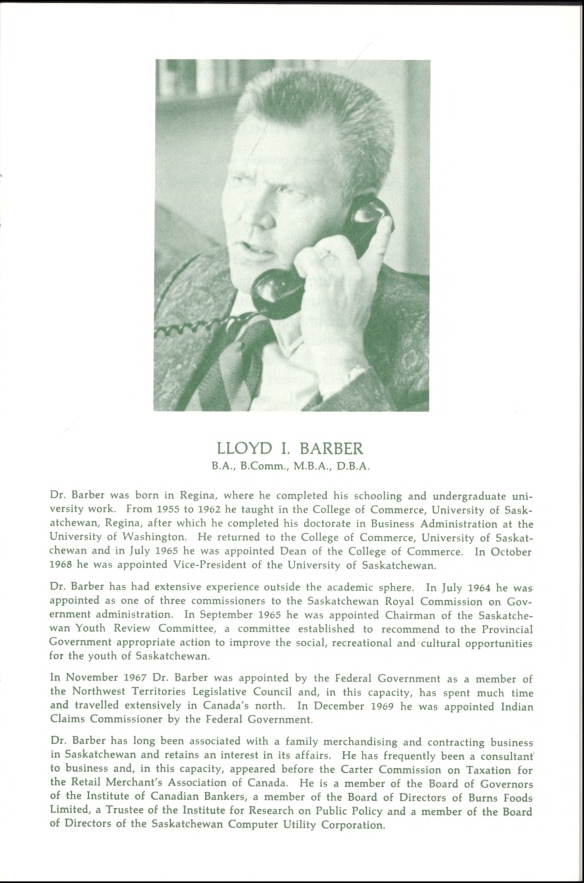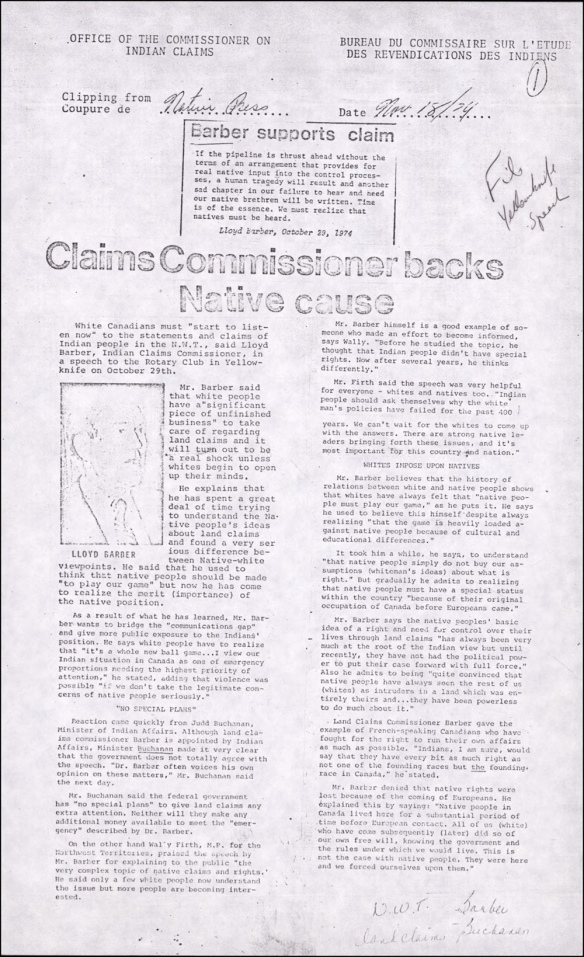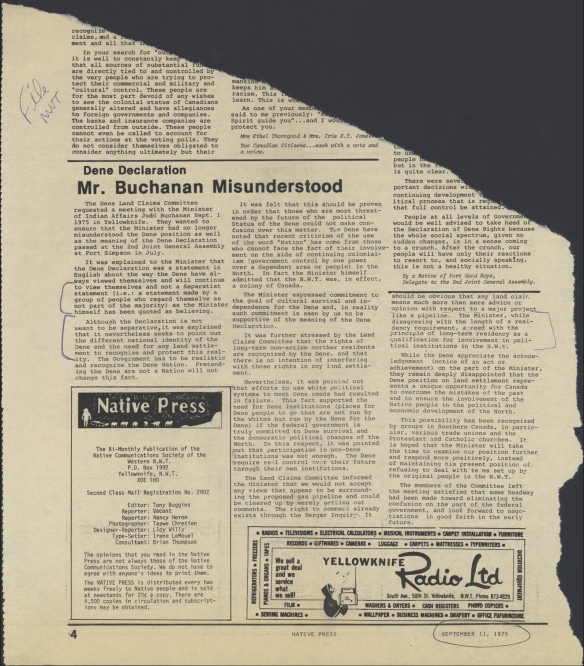![On the left of the graphic, Tatânga Mânî [Chief Walking Buffalo] [George McLean] in traditional regalia on horse. In the middle, Iggi and girl engaging in a “kunik”, a traditional greeting in Inuit culture. On the right, Maxime Marion, a Métis guide stands holding a rifle. In the background, there is a map of Upper and Lower Canada, and text from the Red River Settlement collection.](https://thediscoverblog.files.wordpress.com/2019/02/blog-banner-1.jpg?w=584)
This article contains historical language and content that some may consider offensive, such as language used to refer to racial, ethnic and cultural groups. Please see our historical language advisory for more information.
By Anna Heffernan
Pîhtokahanapiwiyin was a Plains Cree chief who was known as Chief Poundmaker in English. In 1885, he was tried and convicted of treason-felony because of his alleged involvement in the North-West Rebellion/North-West Resistance. On May 23, 2019, 134 years later, the Canadian government posthumously exonerated him and officially apologized to the Poundmaker Cree Nation of Saskatchewan, which is home to many of his descendants. His people, and other Plains First Nations who passed down accounts of his life, remember Poundmaker as a leader who remained committed to peace even when faced with dire circumstances. After decades of advocacy by his First Nation community, Poundmaker’s story is also coming to the attention of the broader Canadian public thanks to his exoneration. At Library and Archives Canada, we have many photographs and documents that help to tell this story.
Poundmaker was born around 1842 to a Stoney Nakoda father and a Métis mother of French Canadian and Cree descent, near Battleford in what is now Saskatchewan. In the early 1870s, an influential Blackfoot chief, Isapo-Muxika (Crowfoot), adopted Poundmaker and gave him the name Makoyi-koh-kin (Wolf Thin Legs), after a son whom Crowfoot had lost in battle. Poundmaker returned to the Cree after living for a time with the Blackfoot, but he maintained a friendship with his adopted father.

Pîhtokahanapiwiyin (Poundmaker), right, with his wife, circa 1884 (a066596-v8)

Isapo-Muxika (Crowfoot) in 1886 (c001871)
By August 1876, Poundmaker had become a headman and spoke at the Treaty Six negotiations. He was successful in having a famine clause added to the treaty, which promised that the Canadian government would provide rations to the signatory nations during times of food scarcity. Poundmaker recognized that the majority of his band favoured making a treaty, and he signed it on August 23, 1876. In 1879, Poundmaker and his band settled on a reserve about 40 miles (65 kilometres) west of Battleford.
Faced with the ever-increasing settlement of the West, which reduced the land and game that First Nations relied on to survive, Poundmaker urged his people to remain peaceful. He advised that war was no longer a feasible option, and in his words, “our only resource is our work, our industry, our farms.” In 1883, the Canadian government reduced the rations they had been providing to First Nations, and many were dissatisfied with the government’s failure to fulfill treaty promises.
In June 1884, several bands came to Poundmaker’s reserve to discuss the situation, including Mistahimaskwa (Big Bear) and his followers. With over 2,000 Cree gathered, they held a Thirst Dance (also known as a Sun Dance), a sacred ceremony in many Plains First Nations traditions. The North West Mounted Police attempted to disperse the Cree and prevent the Thirst Dance from taking place. Poundmaker and Big Bear were able to keep the peace for the time being, but it was clear that tensions between First Nations and the police were high, and it was becoming more difficult to restrain the young warriors in their bands.
In 1885, representatives of the Métis in the District of Saskatchewan, North-West Territories, wrote to Louis Riel, who was living in Montana territory at the time. They were also experiencing difficulty because of increasing white settlement and lack of government recognition of their rights, and they asked Riel to return to the region to help. Leaders of the Cree and other First Nations continued to meet with each other and discuss their worsening predicament. With buffalo herds in decline, hunting was no longer a reliable source of food. The transition to agriculture was difficult, and both First Nations and settler farms in the region were failing to yield sufficient crops. Many Cree were starving, and their leaders were desperate to find a solution.
In the eyes of the settler-Canadian press, the Métis movement and the First Nations movement were the same. In fact, although they had many of the same grievances, the Métis and First Nations leaders were far from being united. Poundmaker sought to pressure the Canadian government into honouring its treaty promises through peaceful means. But as the Métis resistance grew, some of Poundmaker’s band members joined in fighting alongside them. In papers seized from Louis Riel at Batoche, there are French and English translations of a letter from Poundmaker to Riel, in which Poundmaker responds to a letter from Riel. Poundmaker’s reply was likely translated from Cree to French for Riel.

Translations of Poundmaker’s letter to Riel, found among Riel’s papers seized at Batoche. (e011303062)
The letter is undated. Based on its contents, it was likely written after the Battle of Duck Lake, the initial engagement of the North-West Rebellion/North-West Resistance between the North West Mounted Police and commander Gabriel Dumont’s Métis forces. In this letter, Poundmaker expresses respect for Riel but also makes it clear that he is not interested in joining the fight and is ready to negotiate with the military. As the translation reads, “We have all laid down our arms and we wish that the war was finished between us and when the General arrives I am ready to treat with him (hear him literally) with the most sincere intentions of the most complete submission.”
Poundmaker saw the Métis victory at Duck Lake as an opportunity. He wanted to take advantage of the uncertain state that the Canadian government found itself in to negotiate for supplies and rations. His people desperately needed these, and the government was obliged by treaty to provide them. Poundmaker’s band and a Stoney Nakoda band that was camping with them went to Battleford to open negotiations with the Indian Agent. The white settlers had deserted the town and holed up in the fort with the Indian Agent. After waiting for a day, the starving band members looted the empty Battleford homes for food, despite Poundmaker’s attempts to prevent this action. Although greatly exaggerated by the press at the time, the “looting of Battleford” was an act of desperation, not an attempt to start a conflict.
When the Indian Agent would not agree to meet with Poundmaker, the band left the town and set up camp at Cut Knife Creek. Some of the warriors erected a warriors’ lodge at the camp, signifying that the warrior society had taken control. Meanwhile, Lieutenant-Colonel William Otter and his column of soldiers travelled to Battleford. On April 31, 1885, he set out with over 300 men to attack Poundmaker’s band in retaliation for the perceived attack on Battleford. They arrived at Cut Knife Creek on May 2. Poundmaker did not take part in the battle, which lasted for seven hours before Otter withdrew. Poundmaker convinced the warriors not to pursue the retreating army, which prevented many losses. Following this attack, many of the warriors in Poundmaker’s camp departed to join the Métis forces in Batoche. On May 12, Riel’s forces were defeated. Upon learning this, Poundmaker sent a message to Battleford offering to negotiate a peace. Major-General Frederick Middleton replied that he would not negotiate and demanded Poundmaker’s unconditional surrender. On May 26, Poundmaker obliged and came to Battleford, where he was arrested

The Surrender of Poundmaker to Major-General Middleton at Battleford, Saskatchewan, on May 26, 1885. Oil painting by R.W. Rutherford, 1887 (e011165548_s1)
On August 17, 1885, Poundmaker’s trial began in Regina. He was charged with treason-felony. The trial lasted for two days. In our collection, we have a written account of the testimony that Poundmaker gave at his trial. This account was found in a box of miscellaneous files in the Department of Indian Affairs and Northern Development fonds. Unfortunately, there is no indication of the author of this account.

A written account of Poundmaker’s testimony from his 1885 trial (e011303044)
Poundmaker spoke to the court in Cree, while an interpreter translated his words into English. According to the account, the Chief’s words were translated as, “Everything I could do was done to prevent bloodshed. Had I wanted war, I would not be here now, I would be on the prairie. You did not catch me, I gave myself up. You have got me because I wanted peace.” The jury deliberated for half an hour before returning a verdict of guilty. The judge sentenced him to three years in a penitentiary. The impact of this decision on Poundmaker was immediately apparent. According to the author of this account, upon hearing his sentence, Poundmaker said, “Hang me now. I would rather die than be locked up.”
For a man who had spent his life on the land, hunting and leading, the effects of incarceration were profoundly detrimental. After only one year in the Stony Mountain Penitentiary, Poundmaker’s health had declined so much that he was released. Four months after his release, he died of a lung hemorrhage while visiting his adopted father Crowfoot on the Siksika Blackfoot reserve.
Nothing can truly right the injustice of Poundmaker’s imprisonment, or reverse the damage that the loss of his leadership had on his band and the Plains Cree. However, recognizing this injustice is a step toward greater understanding between Canadians and Indigenous peoples.
This blog is part of a series related to the Indigenous Documentary Heritage Initiatives. Learn how Library and Archives Canada (LAC) increases access to First Nations, Inuit and Métis Nation collections and supports communities in the preservation of Indigenous language recordings.
Anna Heffernan is an archivist/researcher for We Are Here: Sharing Stories, an initiative to digitize Indigenous content at Library and Archives Canada.



![On the left of the graphic, Tatânga Mânî [Chief Walking Buffalo] [George McLean] in traditional regalia on horse. In the middle, Iggi and girl engaging in a “kunik”, a traditional greeting in Inuit culture. On the right, Maxime Marion, a Métis guide stands holding a rifle. In the background, there is a map of Upper and Lower Canada, and text from the Red River Settlement collection.](https://thediscoverblog.files.wordpress.com/2019/02/blog-banner.jpg?w=584)







![On the left of the graphic, Tatânga Mânî [Chief Walking Buffalo] [George McLean] in traditional regalia on horse. In the middle, Iggi and girl engaging in a “kunik”, a traditional greeting in Inuit culture. On the right, Maxime Marion, a Métis guide stands holding a rifle. In the background, there is a map of Upper and Lower Canada, and text from the Red River Settlement collection.](https://thediscoverblog.files.wordpress.com/2019/02/blog-banner-1.jpg?w=584)


































